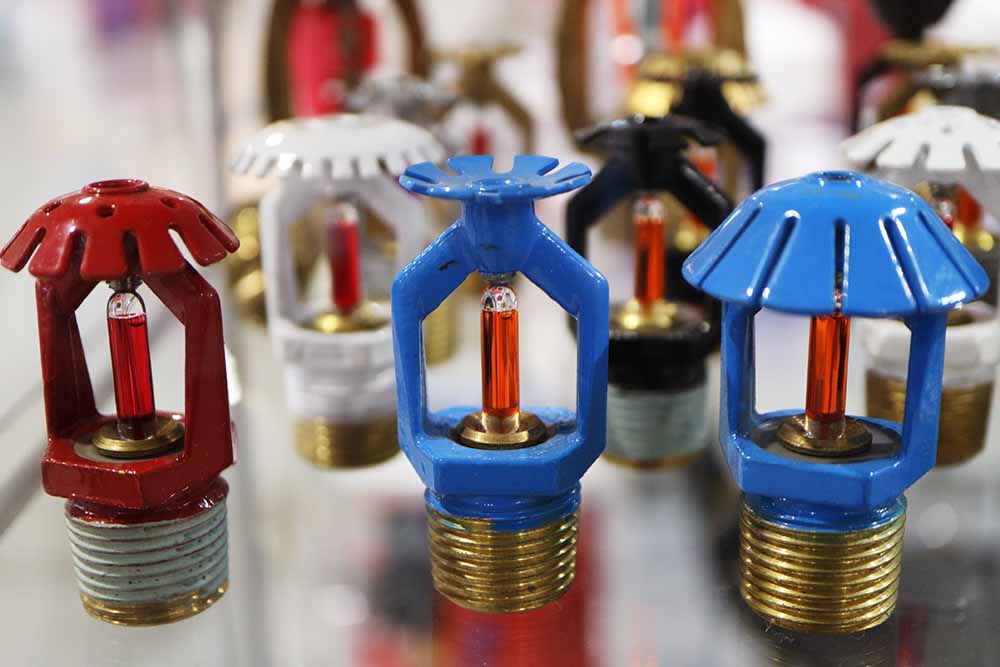Fire sprinkler systems take advantage of the readily available and relatively inexpensive medium of water as a fire suppression agent.
The deployment of each is determined by the hazard/risk potential. A fire protection specialist can help you determine which sprinkler system is right for your building.
 Water-based sprinkler fire suppression systems come in four common types:
Water-based sprinkler fire suppression systems come in four common types:
-
- Wet Systems – A wet system is comprised of piping filled with pressurized water, along which heat sensitive automatic sprinklers are placed and spaced in accordance with recognized standards. When the heat sensing element is triggered, the sprinklers distribute water over a localized area to control or extinguish the fire.Only the activated sprinklers operate, minimizing the water damage. Because the system is normally pressurized with water, a wet system should not be utilized where freezing temperatures are present.
- Dry Systems – Dry systems allow for water suppression in areas that are prone to freezing. These systems use heat sensitive sprinkler heads like a wet system, however, the pipes are pressurized with air or nitrogen prior to the actuation of a sprinkler. This allows for the pipes to remain dry until actuation. A dry pipe system is used primarily in protecting unheated structures or other areas where a conventional wet system would be subject to freezing temperatures. When a fire occurs, an automatic sprinkler head will be triggered, causing the pressure in the system to drop. When the drop in pressure reaches the trip-point, the dry pipe valve opens, allowing water to flow through the pipes and through the actuated sprinkler head.
- Preaction Systems – In areas where water could potentially damage equipment, a pre-action system is the best option. These systems employ a concept similar to a dry-pipe system in that there is normally no water in the pipes, but they are not holding back water with pressurized air or nitrogen. Rather, the water is restrained by an electronic pre-action valve. This valve can be actuated by heat, smoke, and optical detectors, or it can be actuated manually. Once actuated, water is able to flow into the pipes, effectively creating a wet system.
- Deluge Systems – A deluge system is best suited in environments where a fire is fast growing and/or adjacent to high risk hazards. The system works similarly to a pre-action system in that the pipes do not normally contain water or pressurized air, but it differs in that the sprinkler heads are all open. This allows for the water to be dispersed over the fire en mass and immediately.
Contact Environmental Controls Fire Protection today for a free consultation to determine the correct sprinkler system for your fire suppression needs or to schedule sprinkler system maintenance.
Have more Questions?
Need a Quote for Fire Protection Services?
Fill in the form below and one of our Fire Protection Specialists will get right back to you.

